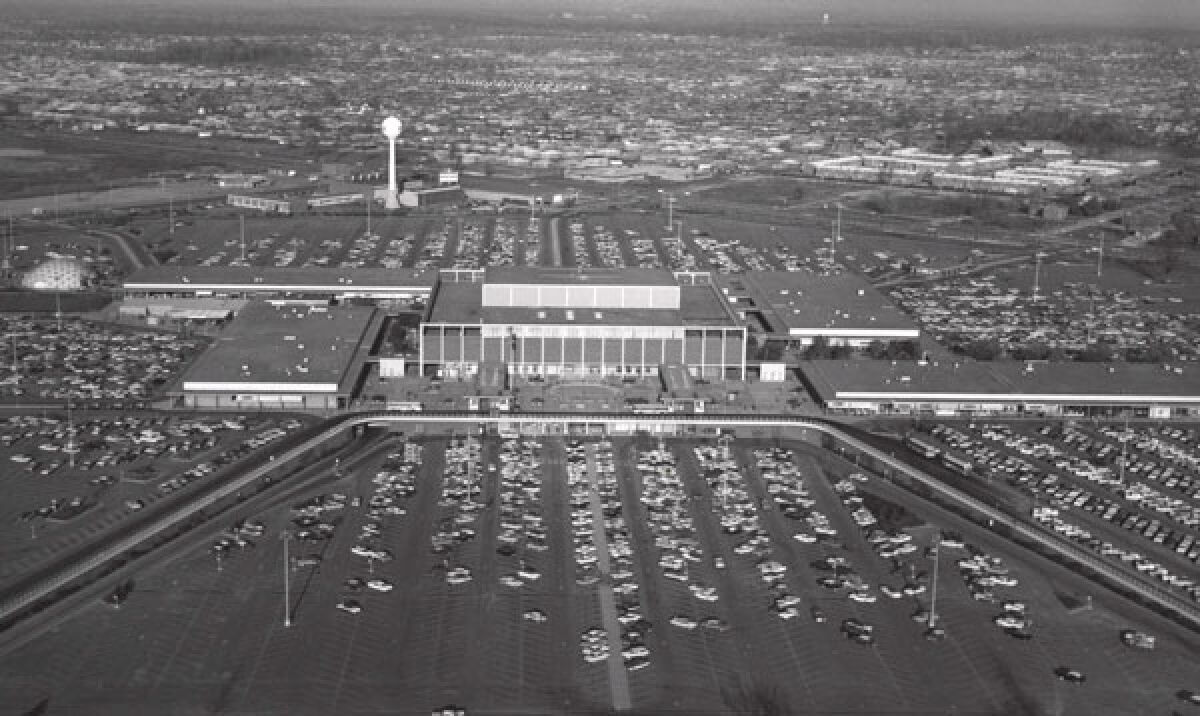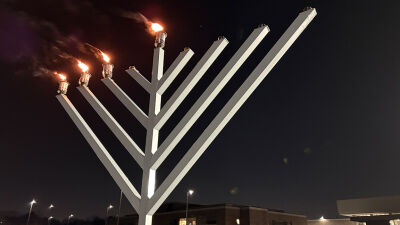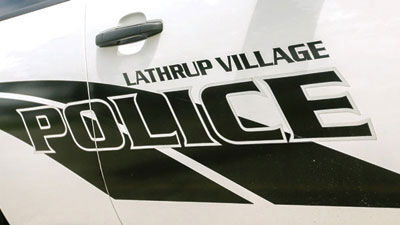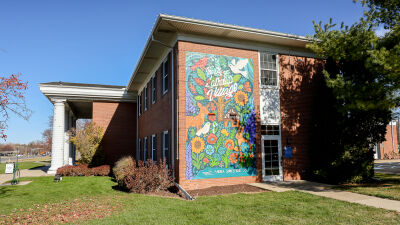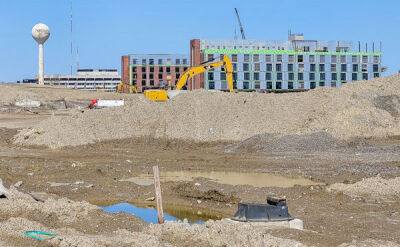
Northland mall was originally designed as an outdoor mall with fountains and gardens.
Photo by Patricia O’Blenes
SOUTHFIELD — For a generation, the Northland Center was a beacon, drawing people from all over to Southfield. Northland opened its doors in 1954 as an outdoor shopping center with gardens and fountains.
“At one point, the shopping center had the highest sales of any shopping center in the United States. It was really the first completely planned, regional shopping center in the United States; there were attempts at creating large shopping centers in the few previous years, but the architect eventually became known as the father of the shopping mall because of his work,” said Bruce Kopytek, an architect and the author of “Hudson’s Detroit’s World-Famous Department Store” and “Jacobson’s: I Miss It So.”
Kopytek is a graduate of the University of Detroit Mercy and has worked as an architect for 45 years. He has a special connection to Northland as he previously worked as the architect behind the Northland redevelopment from 2020 to 2023. In his book about Hudson’s, Kopytek has a chapter on Northland that focuses on the landmark as a mid-century marvel.
On April 3, Kopytek presented “Northland Center: The Remaking of a Mid-Century Landmark” at the Southfield Public Library, an event focusing on the history of Northland and the site’s potential.
He said that before people can understand Northland, they must first understand Hudson’s department store. Hudson’s was founded in 1881 by Joseph Lowthian Hudson, and it was a retail phenomenon.
“For 60 years or so, the big department store in Detroit was the JL Hudson Co., familiarly known as Hudson’s, and this was beyond just the department store — was a real institution,” Kopytek said. “They were a giant, 2.15-million-square-foot department store in downtown Detroit that people would drive miles to come to. It was the third-largest department store building in the world, the tallest department store in the world. It had 25 stories plus four underground basements. And it literally dominated retail in Detroit. It had competitors, but really, when somebody wanted the best of the best, they would go to Hudson’s.”
Enter Victor Gruen, a famous Jewish architect who fled Austria in 1938 due to the threat of Nazis. Gruen came to the U.S. and made a name for himself designing shops. During World War II, he penned several influential papers and articles about what shopping would look like once the war ended.
Kopytek said that not much came from the plans Gruen drew up until a chance encounter.
“He had two offices, one in New York and one in Los Angeles. When he was flying back and forth between the two there was a tremendous storm on the East Coast that forced the plane down in Detroit to land, and he would not be able to fly into the East Coast for a day or so because of the weather.”
Gruen took a tour of Detroit led by some friends he had in the area. Kopytek explained that Gruen thought Hudson’s was a “shining jewel” in the gray, industrial city. Gruen approached James B. Webber, Jr., one of J.L. Hudson’s nephews, to discuss the prospect of building another Hudson’s.
“The president of the store at the time, which was another Webber brother, Richard, didn’t like the idea of just building a store in the middle of nowhere or attaching it to a strip mall because he felt that Hudson’s reputation would diminish from those things. So, what Victor Gruen proposed was the biggest shopping center in the world. And he said, when Hudson’s has to do something, it has to do it big, or it shouldn’t do it at all,” Kopytek said.
From this, four shopping centers were born: Eastland, Southland, Northland and Westland.
During the Korean War, Hudson’s paused its expansion plans because the U.S. government restricted the use of raw materials. Koptek said that this gave Gruen an opportunity to rethink his design of Northland. The plans included an underground tunnel, and a lower level for loading docks and storage rooms to be built out of reinforced concrete.
The Hudson organization told the Department of Defense that they were building a bomb shelter for 100,000 people.
“By the time they got done with all four shopping centers, they could house a half a million people, essentially, in bomb shelters. So, the government turned around and released the material to Northland because they felt that it was important. So construction drawings were done in 1952, construction in 1953 and there was a grand opening in March of 1954,” Koptek said.
Northland would become enclosed in the 1970s, following an enclosed shopping center that Gruen designed in Minneapolis in 1956.
Following its heyday, Northland began to see a decline around the 1980s, according to Kopytek. In 2015, Northland would close its doors.
Southfield Mayor Ken Siver has lived in the city for 57 years, having moved to Southfield when he was 21.
“I’ve lived near Northland most of my adult life, so I’d walk to Northland in nice weather,” he said. “I shopped it to the end, from 1963 to 2015. In 1963, I didn’t work at Northland, but I had a job as a chauffeur driving people to Northland who wanted to shop there because it was a regional center. I did that while I was a student at Oakland University, so I would drive dorm kids to Northland.”
As a firm believer in adaptive reuse, Siver said he is eager to see how Northland is reimagined as a modern version of the “15-minute neighborhood,” which is “virtually everything you need is at your doorstep within a maximum 15-minute walk.”
Siver said the new development at Northland will take roughly five years to complete, and around $403 million is planned for the first phase, but the numbers could change due to inflation. Siver said funding for the 100-acre property comes from $60 million in tax incentives offered by the Brownfield Redevelopment Authority, the Michigan Economic Development Corporation and investors that Contour Development Group has lined up. The city of Southfield has contributed $20 million, which will be returned to the city through brownfield tax credits in the coming years.
“It’s going to become a destination once again,” he said.
He added that a tremendous amount of underground work has been done to storm drains, storm sewers, sanitary lines, water lines, and utility lines, as well as cleanup.
“The thing that everybody needs to know is there’s a vision for the property. But that vision is going to get tweaked as it goes along because it’s going to depend on the marketplace,” Siver said. “We will be returning to Hudson’s as Hudson’s City Market, with food, dining, entertainment, home furnishings, retail, a boutique hotel and maybe loft apartments; the other spaces will be live/work spaces. It won’t be a mall again, but it will have neighborhood retail. It’ll have a police station and green walking space for the residents as well as anybody that comes to visit.”
According to Contour Development Group, 1,500 modern apartments housed in 14 six-story buildings will be built at the site. They will feature a rooftop terrace, a swimming pool, a party room for social gatherings, a lounge area, a fitness center and a yoga room.
For more information about Bruce Kopytek, visit editionsbk.com.
For more information about the Northland Center, visit northlandcitycenter.com.
 Publication select ▼
Publication select ▼